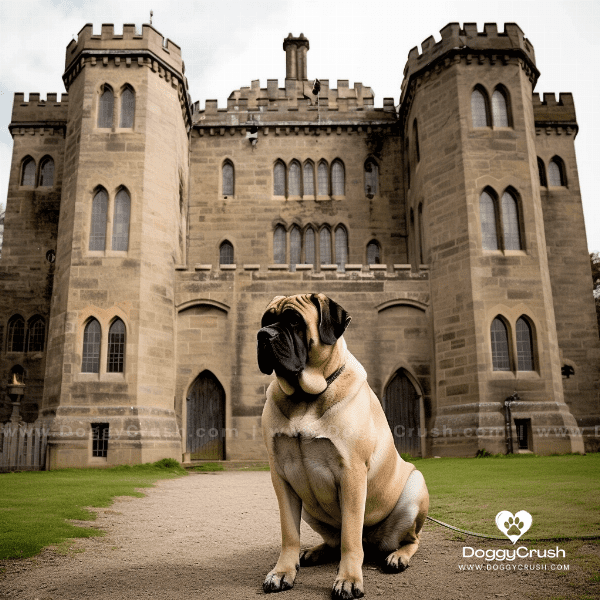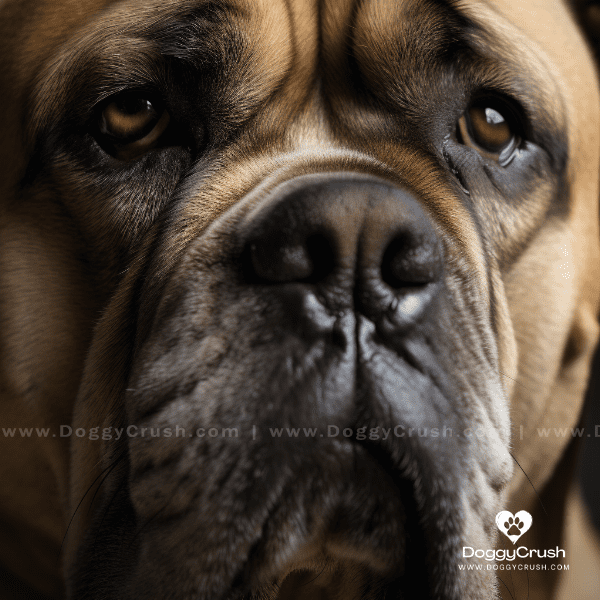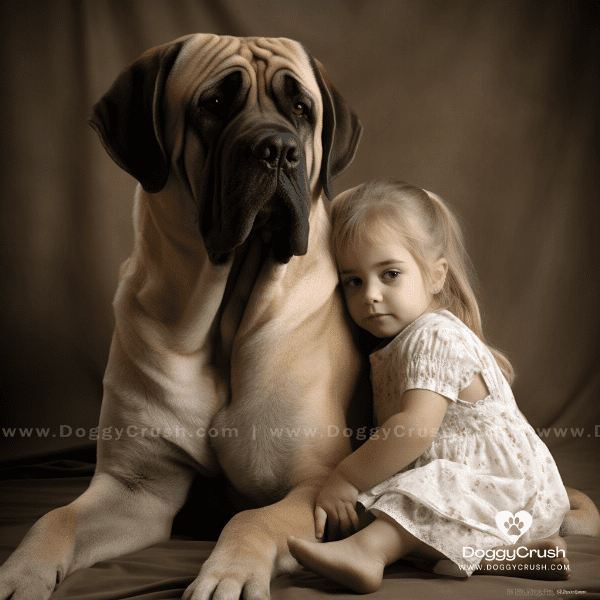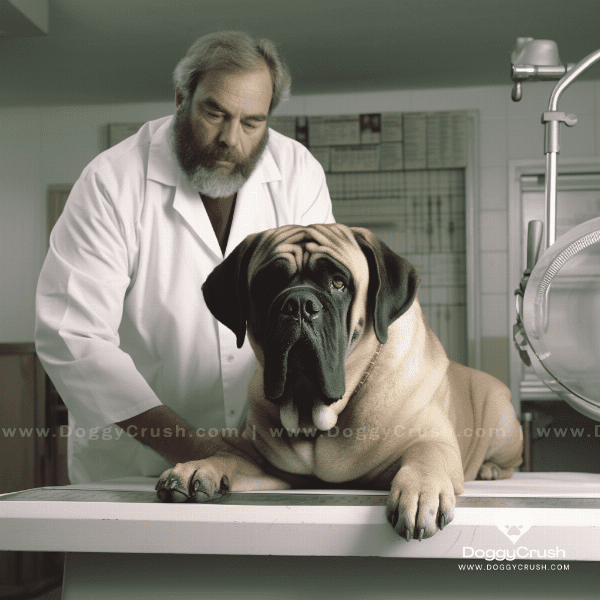Table of Contents
- History and Origin of English Mastiffs
- Physical Characteristics of English Mastiffs
- Temperament and Personality of English Mastiffs
- Training and Exercise for English Mastiffs
- Grooming and Care for English Mastiffs
- Common Health Issues in English Mastiffs
- Feeding and Nutrition for English Mastiffs
- Choosing and Adopting an English Mastiff
- Living with an English Mastiff: What to Expect
History and Origin of English Mastiffs
English Mastiffs are one of the oldest Dog breeds in the world, with a long and storied history dating back thousands of years. While the exact origin of the breed is unknown, it is believed that the English Mastiff descended from ancient breeds such as the Alaunt and Pugnaces Britanniae.
Mastiffs in Ancient Times
Mastiffs were highly valued in ancient times and were used as war dogs, hunting dogs, and even as protectors of livestock. They were prized for their strength, loyalty, and courage, and were often given as gifts to nobles and kings. Mastiffs were also used in the Colosseum in Rome, where they fought against gladiators and wild animals.
The Role of Mastiffs in England
In England, Mastiffs played an important role as guardians of castles and estates, protecting their owners from intruders and wild animals. They were also used as hunting dogs, and were highly prized for their ability to take down large game such as boar and bear.
Development of the Modern Mastiff Breed
Over time, Mastiffs began to be bred for specific traits such as size, temperament, and appearance. The breed was refined in the 19th century, when English Mastiffs were crossbred with other breeds such as the Bulldog and Bloodhound to create the modern Mastiff breed that we know today.
Mastiffs in Modern Times
Today, the English Mastiff is a beloved family pet and a popular show dog, known for their gentle nature and imposing size. Despite their large size, Mastiffs are known for being great with children and are often referred to as “gentle giants.”
Overall, the history and origin of English Mastiffs is a fascinating topic that highlights the breed’s importance in ancient times, as well as their evolution into the lovable and loyal companions we know today.

Physical Characteristics of English Mastiffs
English Mastiffs are a large and imposing breed, known for their massive size and powerful build. Here are some of the physical characteristics that define the English Mastiff breed:
Size and Weight
English Mastiffs are one of the largest dog breeds in the world, with males typically weighing between 160 and 230 pounds, and females weighing between 120 and 170 pounds. They stand at an average height of 27 to 32 inches at the shoulder, making them a truly impressive sight to behold.
Coat and Color
English Mastiffs have a short, smooth coat that is easy to maintain. They come in a variety of colors, including fawn, apricot, and brindle. Some Mastiffs also have a black mask on their face, which is a distinctive trait of the breed.
Head and Facial Features
The head of an English Mastiff is one of its most defining physical characteristics. They have a large, square-shaped head with a short muzzle and a pronounced underbite. Their ears are small and V-shaped, and they have dark, expressive eyes that give them a look of wisdom and intelligence.
Build and Movement
English Mastiffs have a powerful and muscular build, with broad shoulders and a deep chest. They have a distinctive rolling gait when they walk, which is a result of their massive size and weight. Despite their size, Mastiffs are surprisingly agile and can move quickly when they need to.
Overall, the physical characteristics of English Mastiffs make them an impressive and imposing breed that is sure to turn heads wherever they go. From their massive size and weight to their distinctive facial features, English Mastiffs are truly one of a kind.

Temperament and Personality of English Mastiffs
English Mastiffs are known for their gentle and affectionate nature, which makes them great family pets. Here are some of the key personality traits that define the English Mastiff breed:
Loyalty and Devotion
One of the most striking personality traits of English Mastiffs is their unwavering loyalty and devotion to their owners. They are known for being fiercely protective of their families and will go to great lengths to keep them safe.
Independent and Stubborn
English Mastiffs are independent thinkers and can be quite stubborn at times. They require firm and consistent training to prevent them from becoming overly dominant or aggressive. However, with proper training and socialization, Mastiffs can be well-behaved and obedient companions.
Affectionate and Loving
Overall, the temperament and personality of English Mastiffs make them a great choice for families looking for a loyal and affectionate companion. Their calm and gentle demeanor, combined with their fierce loyalty and protective nature, make them one of the most beloved dog breeds in the world.

Training and Exercise for English Mastiffs
Start Early and Be Consistent
It’s important to start training your English Mastiff from a young age to establish good behavior patterns early on. Consistency is key when it comes to training, and you should make sure that everyone in your household is on the same page when it comes to rules and expectations for your Mastiff.
Use Positive Reinforcement
English Mastiffs respond well to positive reinforcement training techniques, which involve rewarding good behavior with treats, praise, and affection. This helps to build a strong bond between you and your Mastiff, and encourages them to repeat good behavior in the future.
Provide Plenty of Exercise
Despite their size, English Mastiffs don’t require a ton of exercise, but they do need regular walks and playtime to keep them healthy and happy. A daily walk or two, along with some playtime in the backyard, should be enough to keep your Mastiff content.
Avoid Overexertion
English Mastiffs are prone to joint problems and should avoid high-impact activities like running and jumping. Instead, stick to low-impact exercises like walking and swimming, and be mindful of their limitations.
Socialize Your Mastiff
English Mastiffs can be protective of their families and may be wary of strangers or other dogs. It’s important to socialize your Mastiff from a young age to help them feel comfortable around new people and animals. This can be done through puppy classes, playdates, and trips to the dog park.
Overall, training and exercise are essential for keeping your English Mastiff healthy and happy. With the right training techniques and plenty of love and attention, your Mastiff can be a well-behaved and obedient companion for years to come.

Grooming and Care for English Mastiffs
English Mastiffs have a short, smooth coat that is easy to maintain, but they do require some grooming and care to keep them looking and feeling their best. Here are some tips on how to groom and care for your English Mastiff:
Brushing and Bathing
English Mastiffs don’t require frequent baths, but they do benefit from regular brushing to remove loose hair and prevent matting. A soft-bristled brush or grooming mitt is ideal for brushing their short coat.
Nail Trimming and Ear Cleaning
Regular nail trimming is important for English Mastiffs, as their nails can grow quite long and cause discomfort or even injury. Their ears should also be cleaned regularly to prevent infections and buildup of wax and debris.
Dental Care
Dental care is essential for English Mastiffs, as they are prone to dental problems such as tartar buildup and gum disease. Regular brushing and dental checkups can help to keep their teeth and gums healthy.
Nutrition and Feeding
English Mastiffs require a balanced and nutritious diet to support their large size and active lifestyle. It’s important to feed them high-quality food that is appropriate for their age and activity level, and to avoid overfeeding, which can lead to obesity.
Health Monitoring
English Mastiffs are prone to certain health problems, such as hip dysplasia and bloat, so it’s important to monitor their health and take them for regular checkups with a veterinarian. Early detection and treatment can help to prevent serious health issues down the line.

Common Health Issues in English Mastiffs
Like all dog breeds, English Mastiffs are prone to certain health issues that owners should be aware of. Here are some of the most common health issues that affect English Mastiffs:
Hip Dysplasia
Hip dysplasia is a common genetic condition in which the hip joint does not develop properly, leading to pain, stiffness, and arthritis. English Mastiffs are particularly prone to hip dysplasia due to their large size and weight.
Bloat
Bloat, also known as gastric torsion, is a serious condition in which the stomach twists and fills with gas, cutting off blood supply and leading to shock and death if left untreated. English Mastiffs are particularly susceptible to bloat due to their deep chest and large size.
Eye Problems
English Mastiffs are prone to several eye problems, including entropion (inward turning of the eyelid), ectropion (outward turning of the eyelid), and cherry eye (prolapsed gland of the third eyelid). These conditions can cause discomfort, irritation, and even vision loss if left untreated.
Heart Problems
English Mastiffs can develop several heart problems, including dilated cardiomyopathy and aortic stenosis. These conditions can lead to heart failure and can be fatal if left untreated.
Cancer
English Mastiffs are also prone to several types of cancer, including bone cancer, lymphoma, and hemangiosarcoma. Early detection and treatment are essential for improving the prognosis of these conditions.
Overall, while English Mastiffs are generally healthy dogs, it’s important for owners to be aware of the potential health issues that can affect the breed. Regular veterinary checkups and monitoring for symptoms can help to catch and treat health problems early, improving the chances of a positive outcome.

Feeding and Nutrition for English Mastiffs
English Mastiffs are a large and active breed, which means that they require a balanced and nutritious diet to support their size and energy levels. Here are some tips on how to feed and nourish your English Mastiff:
Choose High-Quality Food
It’s important to choose a high-quality dog food that is appropriate for your English Mastiff’s age and activity level. Look for dog food that contains high-quality protein, healthy fats, and essential vitamins and minerals.
Avoid Overfeeding
English Mastiffs are prone to obesity, which can lead to serious health problems such as joint problems, heart disease, and diabetes. Avoid overfeeding your Mastiff and stick to recommended portion sizes based on their weight and activity level.
Consider Feeding Small Meals
English Mastiffs are at risk for bloat, which can be exacerbated by eating large meals. Consider feeding your Mastiff several small meals throughout the day instead of one or two large meals.
Provide Plenty of Water
English Mastiffs require plenty of water to stay hydrated and healthy. Make sure that your Mastiff has access to clean, fresh water at all times, and consider providing multiple water bowls throughout your home.
Supplement if Necessary
If your English Mastiff has specific dietary needs or health issues, you may need to supplement their diet with vitamins, minerals, or other supplements. Consult with your veterinarian to determine if this is necessary for your Mastiff.
Overall, feeding and nutrition are essential for keeping your English Mastiff healthy and happy. By providing them with a balanced and nutritious diet, you can help to ensure that your Mastiff lives a long and healthy life by your side.

Choosing and Adopting an English Mastiff
Adopting an English Mastiff is a big decision that requires careful consideration and planning. Here are some tips on how to choose and adopt an English Mastiff:
Research the Breed
Before adopting an English Mastiff, it’s important to research the breed thoroughly to make sure that it’s the right fit for you and your family. Learn about their temperament, exercise needs, and potential health issues to make an informed decision.
Find a Reputable Breeder or Rescue
If you decide to adopt an English Mastiff, make sure to find a reputable breeder or rescue organization. Look for organizations that are transparent about their breeding and adoption practices, and that prioritize the health and well-being of their dogs.
Meet the Mastiff in Person
Before adopting an English Mastiff, make sure to meet the dog in person to get a sense of their temperament and personality. This can help you to determine if the Mastiff is a good match for your family and lifestyle.
Consider Adoption from a Rescue
Adopting an English Mastiff from a rescue organization can be a great way to give a deserving dog a second chance at a loving home. Many rescue organizations provide medical care, training, and socialization for their dogs before adoption.
Prepare Your Home
English Mastiffs require a lot of space and exercise, so make sure that your home and yard are suitable for a large and active dog. Invest in high-quality dog beds, toys, and food and water bowls, and make sure that your home is safe and secure for your new Mastiff.
Overall, choosing and adopting an English Mastiff requires careful consideration and planning. By doing your research, finding a reputable breeder or rescue organization, and preparing your home and family for a new addition, you can give your Mastiff the best possible start in their new home.

Living with an English Mastiff: What to Expect
English Mastiffs are a beloved breed known for their gentle nature, loyalty, and affectionate personalities. Here are some things to expect when living with an English Mastiff:
Lots of Love and Affection
English Mastiffs are known for their loving and affectionate nature, and thrive on attention and affection from their owners. They make great cuddle buddies and will often follow their owners from room to room to stay close.
Protective Instincts
English Mastiffs are known for their protective instincts and will go to great lengths to keep their families safe. They are often wary of strangers and other dogs, but can be socialized to feel more comfortable around new people and animals.
Moderate Exercise Needs
While English Mastiffs are a large and active breed, they don’t require a ton of exercise. A daily walk or two, along with some playtime in the backyard, should be enough to keep them content and healthy.
Health Concerns
Like all dog breeds, English Mastiffs are prone to certain health issues, such as hip dysplasia, bloat, and eye problems. Regular veterinary checkups and monitoring for symptoms can help to catch and treat health problems early.
Overall, living with an English Mastiff is a rewarding experience that requires love, patience, and dedication. By providing your Mastiff with proper care, training, and affection, you can give them a happy and healthy life by your side.




